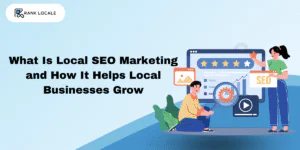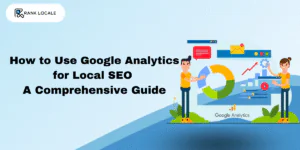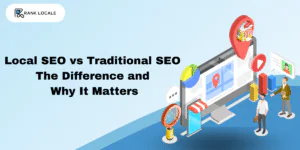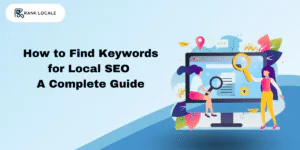Search engine optimization is the process of improving a website to increase its visibility on search engines like Google. But not all SEO is the same. There are different types of SEO for different goals. Two major types are local SEO vs traditional SEO.
Both help your website rank better, but they do it in different ways. One focuses on local searches. The other targets a broader audience. Understanding the difference is key. It helps you choose the right strategy for your business.
In this blog, we’ll break down local SEO and traditional SEO. We’ll explain how each works, why it matters, and which one suits your needs. Whether you run a small local store or a large online business, this guide is for you.
What is Traditional SEO?

Traditional SEO is also known as national or organic SEO. It is about improving your website’s visibility across a wide area. It does not target a specific city or region. Instead, it helps your site rank for general keywords that people search all over the country or world.
How It Works:
Traditional SEO relies on several techniques:
- Using relevant keywords
- Creating quality content
- Getting backlinks from other websites
- Improving site speed and user experience
- Using proper meta tags and image alt text
The goal is to rank high on search engine results pages (SERPs) for non location specific queries.
Example:
A company that sells fitness equipment online would use traditional SEO. They may target keywords like:
- “best home gym equipment”
- “adjustable dumbbells review”
- “how to build muscle at home”
These keywords don’t focus on one place. People from anywhere can search for them.
Who Should Use It:
- E-commerce stores
- Blogs and publishers
- Online service providers
- National brands
If your customers are not limited by location, traditional SEO is the right approach.
What is Local SEO?
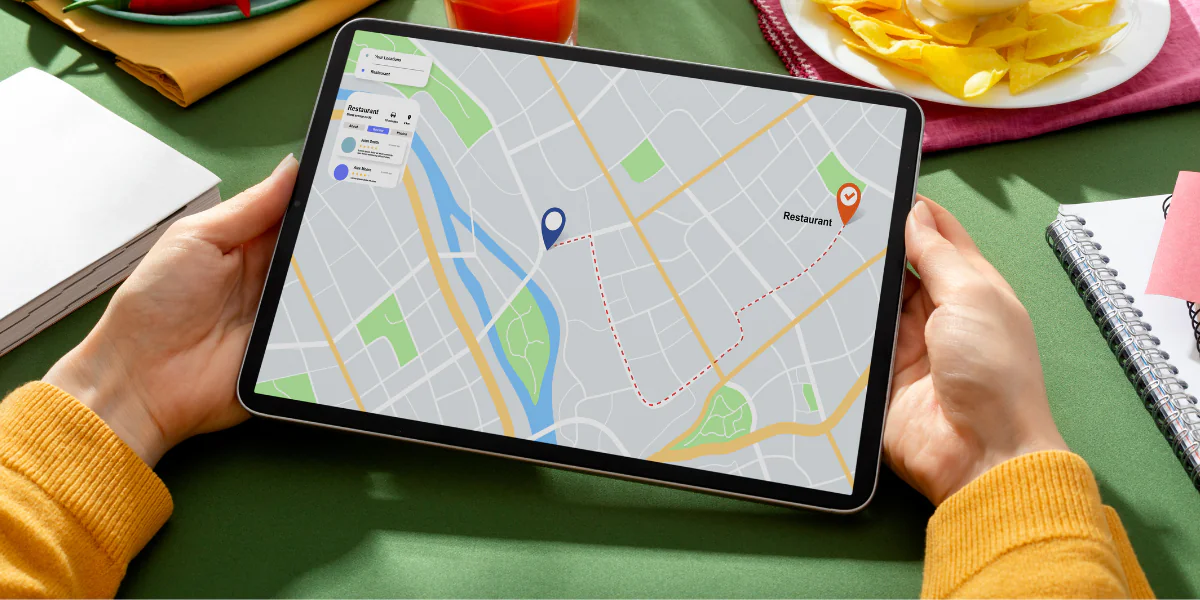
Local SEO means improving your online info so more people nearby can find your business. It shows your business in local search results.
This helps a lot if you have a shop or offer services in one area.
How It Works:
Local SEO includes:
- Setting up and optimizing your Google Business Profile
- Getting listed in online directories (citations)
- Collecting local customer reviews
- Adding location-specific keywords to your website
- Embedding a Google map on your contact page
- Local SEO helps your business appear in Google’s local pack and map results.
Example:
A dentist in Springfield, MO, would use local SEO to rank for:
- “dentist near me”
- “family dental clinic in Springfield MO”
- “emergency dental care in Springfield”
These keywords have local intent. The goal is to be found by people nearby who are ready to buy or need a service.
Who Should Use It:
- Local service providers
- Restaurants and cafes
- Salons and spas
- Real estate agents
- Legal and medical professionals
If your work depends on people visiting your office or finding you nearby, local SEO is very important.
Main Differences Between Local SEO vs Traditional SEO
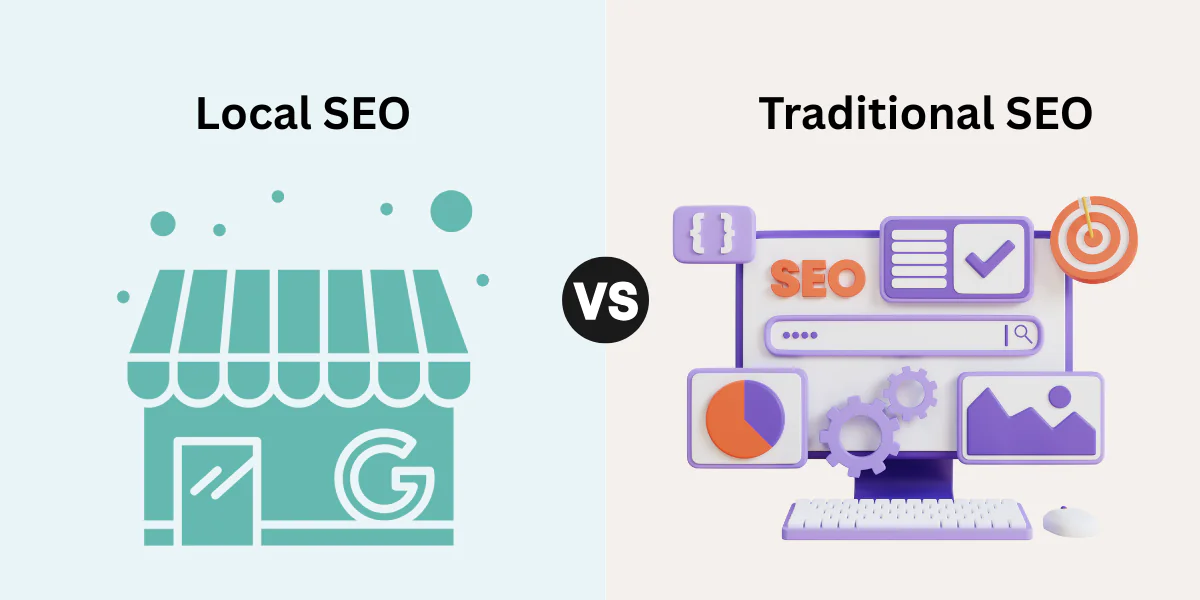
These both work in different ways. When you see how they are not the same, it becomes easier to plan your marketing. Here’s a simple look at the differences:
| Feature | Local SEO | Traditional SEO |
| Target Audience | Local customers | National or global audience |
| Keywords | Location-based | General/non-location-based |
| Tools | Google Business Profile, local directories, reviews | Website content, backlinks, metadata |
| Search Results | Local pack, Google Maps | Organic listings in search results |
| Conversions | Calls, visits, directions | Website clicks, form submissions |
| Ranking Factors | Proximity, relevance, reviews, citations | Content quality, backlinks, site speed |
Why This Difference Matters
Using the wrong SEO strategy can waste time and money. If you run a local shop but focus only on traditional SEO, you may not attract people near you. If you run an online course but only use local SEO, you’re limiting your reach.
Choosing the right type helps you:
- Reach your ideal customers
- Get better leads
- Increase your ROI
Why Local SEO Is Crucial in 2025

Local SEO is more important than ever. People rely on smartphones to find local businesses. Voice search is growing. And Google keeps updating its local algorithms to improve user experience.
1. Local Search Is Common
Over 46% of all Google searches have local intent. That means almost half of searchers want nearby solutions. If you don’t show up, your competitors will.
2. Mobile and Voice Searches Are Rising
Near me searches have exploded. People ask their phones to find things like pizza near me or urgent care open now. If your site is optimized for local SEO, you’ll show up in those results.
3. Google Prioritizes Local Results
Google’s local pack appears above regular results for many searches. Getting into that pack increases visibility, trust, and clicks.
4. Higher Conversion Rates
Local SEO brings traffic from people who are ready to act. Someone searching for “emergency plumber in Dallas” isn’t browsing—they need help now.
When Should You Use Traditional SEO?

Traditional SEO is perfect when your reach isn’t limited by geography. Here are some examples:
1. Online Businesses
If you sell products or services online, then you want traffic from everywhere. You need to compete nationally or globally.
2. Bloggers and Content Creators
Content like how-to guides, product reviews, or educational articles target a wide audience. You want to rank for keywords with high search volume, not tied to one area.
3. SaaS and Tech Companies
Software companies usually serve users in multiple regions. Traditional SEO helps them grow online visibility beyond local boundaries.
4. Large Brands
National companies want to dominate organic search. They focus on traditional SEO to build authority and outrank competitors across the board.
When Should You Use Local SEO?

Local SEO is important for businesses that want to be prominent in a specific area. Here’s when it’s most effective:
1. Service Area Businesses
Electricians, HVAC companies, cleaners, and landscapers all benefit from local SEO. People need these services in their local area, often urgently.
2. Storefronts and Restaurants
Foot traffic matters. Showing up in near me searches means more customers walking through your door.
3. Real Estate Agents
Buyers and sellers look for agents in their city. You need to rank for terms like homes for sale in DHA Multan or real estate agent in Multan.
4. Medical, Legal, and Personal Services
People trust local providers for personal needs. Local SEO builds visibility and credibility for lawyers, dentists, doctors, and therapists.
How to Improve Traditional SEO
If your strategy is based on traditional SEO, follow these proven steps:
1. Create High-Quality Content: Write helpful articles and product descriptions. Use relevant keywords naturally.
2. Build Authoritative Backlinks: Get links from other trusted sites. Guest posts, mentions, and partnerships help a lot.
3. Use Long-Tail Keywords: These are longer, specific phrases like “best running shoes for flat feet.” They attract more qualified traffic.
4. Optimize Technical SEO: Make sure your website loads fast. Fix broken links. Use HTTPS. Ensure mobile responsiveness.
5. On-Page SEO Matters: Use clear titles, meta descriptions, headers, and internal links. Add image alt tags and schema markup.
How to Improve Local SEO
To grow your local presence, focus on these tactics:
1. Optimize Your Google Business Profile: Claim your profile. Add correct info. Upload photos. Update hours. List your services.
2. Get Reviews From Happy Customers: Ask for Google reviews. Respond to them. Good reviews boost rankings and trust.
3. Use Location-Based Keywords: Target phrases like “hair salon in New York” or “best photographer in Austin.” Add city names to your content.
4. Build Local Citations: List your business on local directories like Yelp, Foursquare, and Apple Maps. Make sure all info matches.
5. Create Location Pages: If you serve many areas, create individual pages for each. Tailor content for that location.
Can You Use Both? Absolutely: Many businesses benefit from combining both local and traditional SEO. You don’t have to choose one over the other.
Example:
A law firm in Houston can use local SEO to get nearby clients. At the same time, they can publish blog posts on legal advice to attract national traffic.
Tips to Combine Both

- Use blogs to rank for broad topics
- Optimize location pages for local traffic
- Get local links and general backlinks
- Add schema markup for both local and general SEO
This dual strategy helps you:
- Rank in map packs and organic search
- Attract leads from your area and beyond
- Build brand authority while serving your local market
Conclusion
Local SEO and traditional SEO serve different goals. One focuses on getting local customers. The other aims for broad visibility.
Choose local SEO if you want to:
- Bring in foot traffic
- Get phone calls from nearby clients
- Appear in “near me” searches
Choose traditional SEO if you want to:
- Reach a national or global audience
- Build online authority
- Rank for educational or product-related keywords
In many cases, using both is the best move. It helps you cover more ground, attract more traffic, and convert more leads. Understand your business, define your goals, and pick the SEO strategy that works best for you.
Need help getting started? Rank Local is here to guide your business toward better rankings, more visibility, and real growth. Whether you’re targeting your neighborhood or the whole country, we have the right SEO plan for you. Contact Rank Local today, and let’s grow your online presence together!

